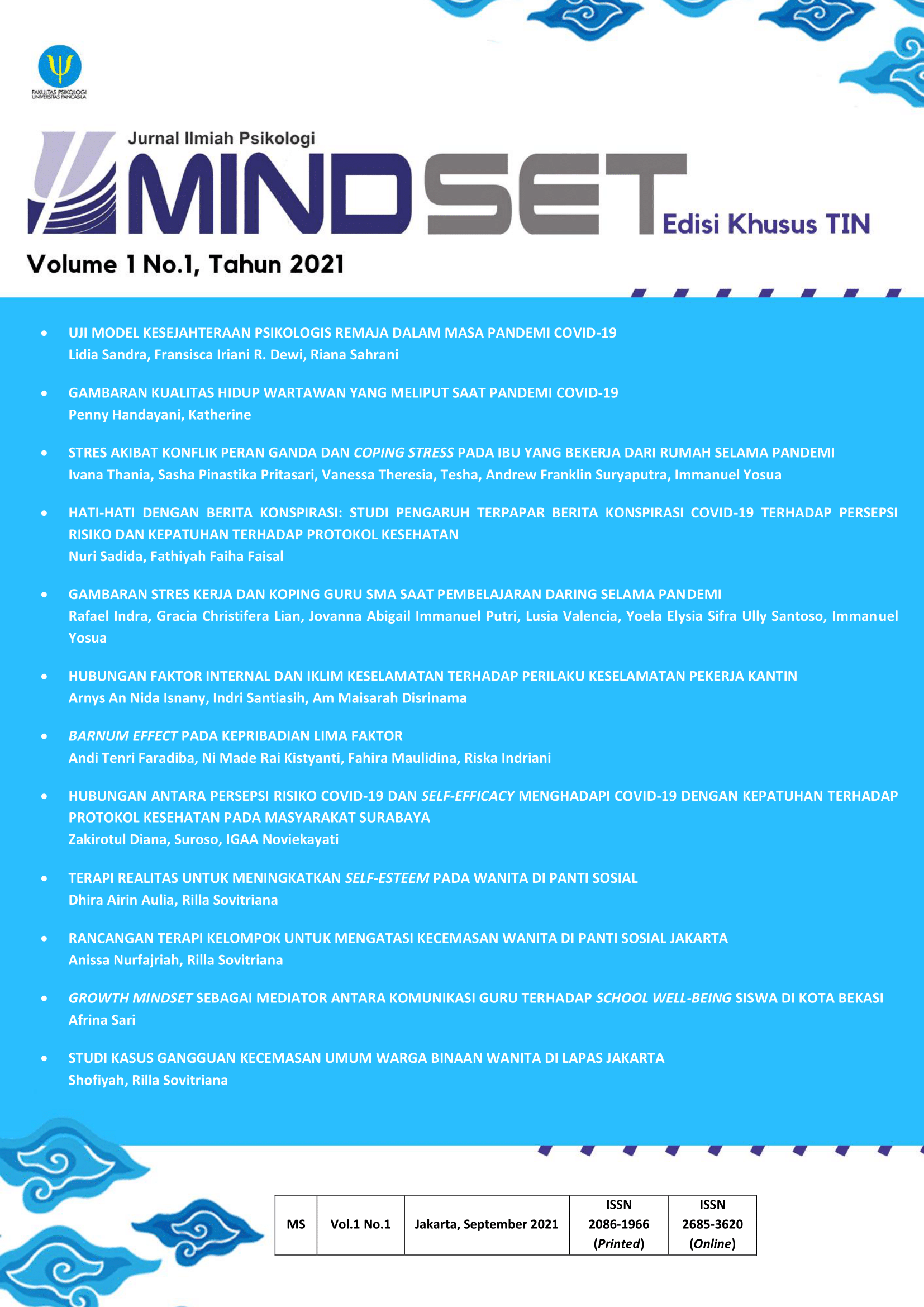Hubungan Faktor Internal dan Iklim Keselamatan terhadap Perilaku Keselamatan Pekerja Kantin
Abstract views: 427 | PDF (Bahasa Indonesia) downloads: 397
Abstract
Incidents in 2018 and 2019 in support company’s canteen involve the same person caused by unsafe action and fatigue. Company never measure the safety climate whereas the company commit to safety. Objectives in this research is to find the relationship of internal factor (gender, age, year working experience and fatigue) and safety climate to safety behavior using chi-square, fisher exact test and kendall tau test also to find the difference of safety behavior by gender, age, and year working experience using kruskal wallis and mann whitney test. Methods in this research are safety observation checklist, Swedish Occupational Fatigue Inventory questionnaire to measure fatigue, Nordic Occupational Safety Climate Questionnaire-50 to measure safety climate. There is a relationship between physical discomfort (fatigue) related to safety behavior (p-value 0,03, correlation coefficient 0,513). There is no difference of safety behavior by gender, age, and year working experience. Recommendations given are to ensure drinking water is available, suggest the workers do warming up before working and provide cool and warm compress near from the first aid box.
References
Åhsberg, E. (1998). Perceived Fatigue Related To Work. Sverige: National Institute for Working Life.
Bisen, V. & Priya. (2010). Industrial Psychology. New Delhi: New Afe International (P) Limited, Publishers.
De Boeck, E., Mortier, A., Jacxsens, L., Dequidt, L., & Vlerick, P. (2017). Towards an extended food safety culture model: Studying the moderating role of burnout and jobstress, the mediating role of food safety knowledge and motivation in the relation between food safety climate and food safety behavior. Trends in Food Science and Technology, (62), 202-14.
Cooper, M. D., & Phillips, R. A. (2004). Exploratory analysis of the safety climate and safety behavior relationship. Journal of Safety Research, 35(5), 497-512. https://doi.org/10.1016/j.jsr.2004.08.004
Glendon, A. I., & Litherland, D. K. (2001). Safety climate factors, group differences and safety behaviour in road construction A.I. land development: Risk, return and risk management. Journal of Real Estate Finance and Economics, 36(1), 81-102.
Gyekye, S. A., & Salminen, S. (2009). Age and workers’ perceptions of workplace safety: A comparative study. The International Journal of Aging and Human Development, 68(2), 171-84. https://doi.org/10.2190/AG.68.2.d
Huda, U. F., Sukmawati, A., & Sumertajaya, I. M. (2016). Model perilaku keselamatan kerja karyawan pada industri berisiko tinggi. Jurnal Manajemen Teknologi, 15(1), 51-66.
Kines, P., Lappalainen, J., Mikkelsen, K. L., Olsen, E., Pousette, A., Tharaldsen, J., Tómasson, K., & Törner, M. (2011). Nordic safety climate questionnaire (NOSACQ-50): A new tool for diagnosing occupational safety climate. International Journal of Industrial Ergonomics, 41(6), 634-46.
Nursitasari, H. A. (2019). klasifikasi potensi bahaya dan safety map di dapur PT. Denso Indonesia Sunter Plant. Journal of Industrial Hygiene and Occupational Health, 3(2), 132-144.
Sirait, F. A., & Paskarini, I. (2017). Analisis perilaku aman pada pekerja konstruksi dengan pendekatan behavior-based safety (Studi di workshop Pt. X Jawa Barat). The Indonesian Journal of Occupational Safety and Health, 5(1), 91-100. http://dx.doi.org/10.20473/ijosh.v5i1.2016.91-100
Sugiono. (2007). Metode Penelitan Kuantitatif, Kualitatif dan R&D. Bandung: ALFABETA.
Turnbull-Fortune, S., & Badrie, N. (2014). Practice, behavior, knowledge and awareness of food safety among secondary & tertiary level students in Trinidad, West Indies. Food and Nutrition Sciences, 05(15), 1463-1481.










